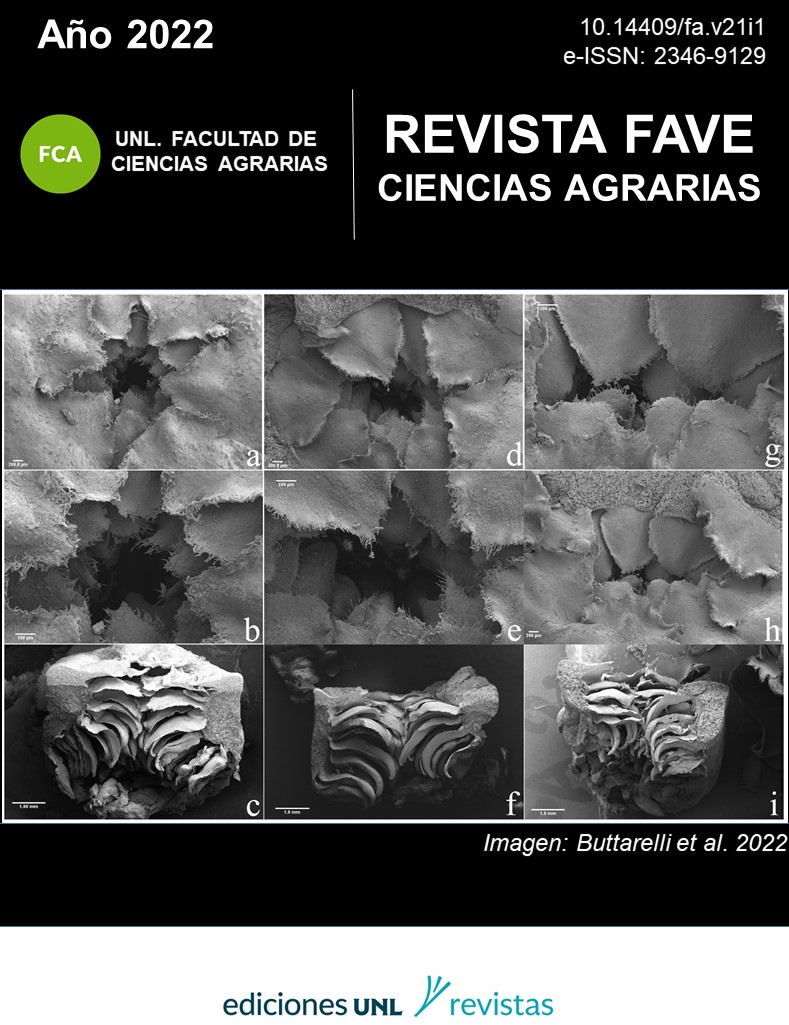Obtaining hybrids of Portulaca umbraticola through conventional crossing.
DOI:
https://doi.org/10.14409/fa.v21i1.11124Keywords:
hybridization, plant breeding, morphology, ornamental, novelAbstract
The species of the genus Portulaca are widely used in gardening for potted plants and for outdoor decoration. They are easy to plant, have minimal requirements, add beauty to a particular environment and are a valued resource for landscaping. The ornamental plant market is very dynamic and is eager to frequently incorporate new varieties and hybrids. For these reasons, the objective of this research is: to create new hybrids of Portulaca umbraticola through intraspecific crosses. Crossings were made between four cultivars of P. umbraticola with flowers of different colors (white, red, red-fusia and bicolor yellow-fusia) under a partial diallel design without incorporating self-pollinations. After the pollinations were carried out, the percentage of fruit set, the number of seeds and the percentage of germination were measured in each cross. An average of fruit formation percentage of 42.5%, 13.5 seeds per fruit and a germination percentage of 22.5% were obtained. As a result, hybrids with similar morphological characteristics were obtained in each cross, however, they presented different interesting coloring patterns in the flower and foliage. All hybrids, except those of the fourth cross, showed novelty phenotypic changes. Possible inheritance patterns for flower color are also analyzed. By presenting these new phenotypes, they can be considered as material to develop new cultivars with ornamental and landscape interest. The intraspecific hybridization of P. umbraticola is an effective technique for the genetic improvement of the specie and obtaining new cultivars.

















